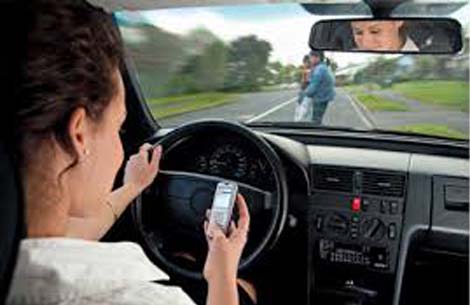
How distracting is talking on a cellphone while driving?
Darren Cottingham- Right Driver
We all know that you are not allowed to drive while holding a cellphone in your hand but you are allowed to drive while talking using a hands-free kit, e.g. via a Bluetooth headset or connectivity with your car, or via plugging your phone directly into your car (if it supports it). The Highway Code, however, recommends that you donít talk at all on a cellphone while you are driving.
There are a number of situations where you can be talking to someone else while in your car. For example, you can simply be talking on the phone, which will be to a person you cannot see and who cannot see you. You could be talking to a person in the front passenger seat; you can see them, they can see you, and they can see whatís going on ahead of the car. Or you could be talking to a passenger in the back of the car Ė you might be able to see them in the rear-view mirror and they might be able to see whatís going on ahead of the car, depending on where they are sitting, their height, etc.
Does your driving ability change between these three different types of situations? A study at the University of Illinois and the Beckman Institute set out to find out whether this was the case, with quite surprising results. It turns out that the person you are talking to influences your level of concentration while you are driving. Psychology professor and Institute director Arthur Kramer said this on the role of a passenger in the car. ďWeíve done years of study on driver distraction, and previous studies suggest that passengers often arenít distracting. In fact, passengers can be helpful, especially if theyíre adults who have had experience and also are active drivers themselves.Ē
The researchers set up four situations in a simulator to find out how our driving differs depending on the conversation partner:
1. A driver alone
2. A driver with a passenger in the front seat
3. A driver talking to a person on a hands-free phone
4. A driver talking to a person on a hands-free phone, but the person can see what the driver is doing and where they are driving
The drivers were mostly college-goers and were confronted with a complex drive that involved navigating in traffic around unpredictable drivers on unpredictable roads. All aspects of the driversí performance was monitored including their lane position, distance from other cars, speed, reactions times, ability to navigate to a specific point and so on. Their speech to their conversation partner was recorded, too, as well as exactly where they looked (using an eye tracker).
In scenario one, a driver alone, the driver had the least risk of having an accident. In scenario two (a passenger in the front seat next to them), the accident rate increased slightly, but the passengers actually assisted the drivers with choosing the right exit, remembering road signs and so on Ė they were aware of where the driver was driving.
In scenario three the conversation partner didnít know what the driver was doing. This tripled the likelihood of a collision. However, in scenario four, where the person on the phone could see the driver and where the driver was driving, the risk of collision was reduced.
Through analyzing the voice patterns it was found that the passenger adjusts their conversation and what they say in response to dangers presented on the road. They can stop talking or provide assistance and additional warning about specific road conditions Ė something that a person who canít see the road canít do. Collisions were reduced 40-50% over scenario three Ė still more than having a passenger in the car, but much less than just talking on the phone where the conversation partner couldnít see the driverís face or the road ahead.
What is happening when you are driving and talking on a cellphone?
Itís widely reported that driving while talking on a cellphone carries roughly the same risk as driving while drunk. Reaction times are significantly affected. Utah Highway Patrol conducted a study that involved 25 men and 15 women aged between 22-34 and it was found that when using a cellphone they were 9% slower to hit the brakes.
There is an argument that hands-free phones lull drivers into a false sense of security with them believing that they are safe while talking using a hands-free kit.
The type of conversation influences our level of engagement with the road vs the caller. If itís a quick call to advise someone you are running late there is less emotional and cognitive involvement than if you are discussing a complex and important business transaction or having an argument with your spouse. Some people become quite animated when calling, taking their hands off the wheel to emphasize what they are saying.
If you get a call while driving, pull over to answer it. If itís not possible to pull over, they will leave a message if itís important.







